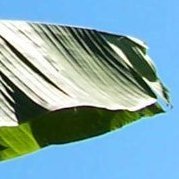Elderly rice farmer dies in field blaze in Udon Thani
-
Recently Browsing 0 members
- No registered users viewing this page.
-
Topics
-
-
Popular Contributors
-
-
Latest posts...
-
143
Early assessment suggests US strikes didn’t destroy Iran’s nuclear sites
There are some very biased opinions offered as "fact". A failure because there is no scorched earth evidence of total destruction, or a success because the nuclear weapons source sites were hit with ease. I measure success on the basis of it showing that the USA was not isolationist and that finally, someone other than Israel said no to the deranged mullahs.It is a regime that hangs teenagers in public squares for the crime of being gay, that beats and blinds women for going without a hijab, thatcruelly kills companion dogs because dogs are considered harem, and where millions come out to chant death to those who oppose shiite violence. The Iranians may have shocked the region's arabs into realizing that there can be no accommodating Iran. It was wonderful seeing the Qataris panic at the sight of missiles overhead. Finally, they get an idea of what they have been financing for decades. On one hand we have people complaining that Trump bombed Iran, but then those same people complain that the destruction was not intense enough. Nothing trump does will satisfy them. -
53
UK Asylum Appeals Surge Leaves Thousands of Migrants in Hotels for Years
Indeed someone said that, as a debate goes on, the probability of Hitler being mentioned always approaches unity. -
15
-
44
According to my pulse oximeter, I should be dead :) Buy an oxygen concentrator?
Doing a bit of reading, and you seem to be at the threshold to consider some supplemental oxygen. Hopefully your #s are better when infection free. -
1
Where to find a hypoallergenic helmet
How old is the helmet (even though you clean it often)... Could it be locked in bacteria (from sweating etc)... how do you clean it, remove the lining and soak with an antibacterial detergent ? Do you usually show any signs of allergy to other items ??? clothing ? Many higher end brands claim to use hypoallergenic materials... Also, where are you ? If in Bangkok, take yourself to Paddok or Panda Rider - they stock a lot of the brands I've listed below... Recommended Hypoallergenic Helmet Brands & Models 1. Shoei Material: Multi-density EPS, anti-bacterial, moisture-wicking liners Best models: Shoei RF-1400 (NXR2 in EU) – top-tier, quiet, comfortable, removable liner Shoei Neotec II – modular, anti-bacterial interior, touring-friendly 2. Arai Material: Eco-Pure liner system (low acid levels, skin-friendly) Best models: Arai Quantic – great for touring, hypoallergenic liner Arai Tour-X4 – ADV helmet, fully removable, washable interior 3. Schuberth Material: Coolmax interiors, antimicrobial, moisture-wicking Best models: Schuberth C5 – luxury modular helmet with hypoallergenic liner Schuberth E2 – ADV touring helmet with washable, skin-safe liners 4. Shark Material: Natural bamboo fibre interiors (especially in older EVO series) Best models: Shark Spartan GT Pro – top-end sport-touring helmet, comfy liner Shark Evo-One 2 – modular, washable interior 5. Klim Material: Technical fabrics (antimicrobial, moisture-wicking) Best model: Klim Krios Pro – ultralight ADV helmet, Koroyd tech, eco-friendly materials 6. Nexx Material: X-Mart Dry fabrics (cool, antibacterial, hypoallergenic) Best models: Nexx X.WED 2 – ADV helmet with plush liner Nexx X.Vilitur – modular, touring-ready, liner ideal for sensitive skin -
3
Frozen UK State Pensions: A Deep Injustice — But Now There’s a Way to Change It
Although I am not a victim of the UK pension freeze because I live in Switzerland, I applaud the initiators of this project and wish them success in getting this unfair situation corrected. I would gladly give my personal support but not being a UK national, I cannot register for voting.- 1
-

-
-
Popular in The Pub













Recommended Posts
Create an account or sign in to comment
You need to be a member in order to leave a comment
Create an account
Sign up for a new account in our community. It's easy!
Register a new accountSign in
Already have an account? Sign in here.
Sign In Now